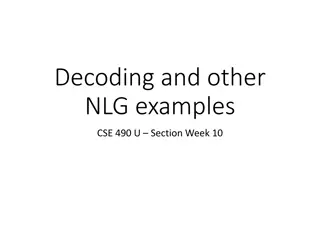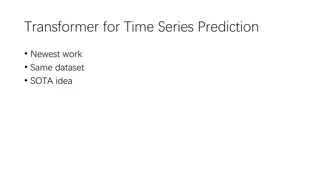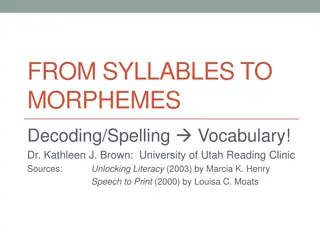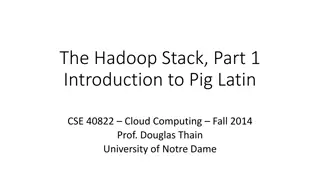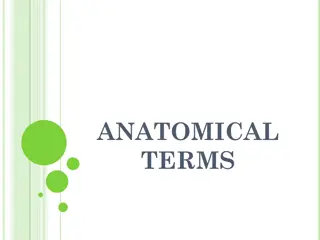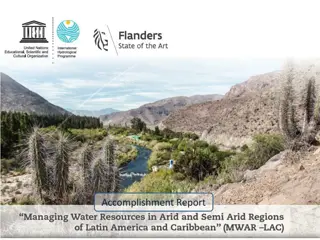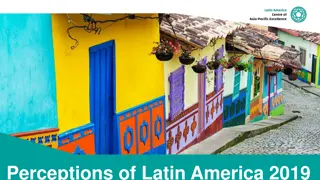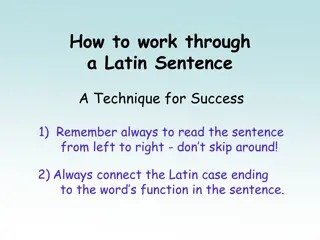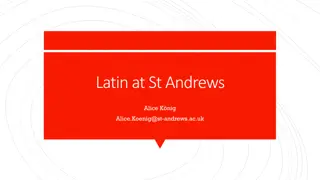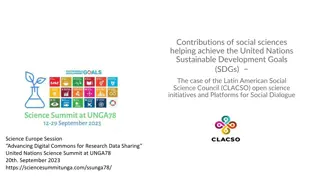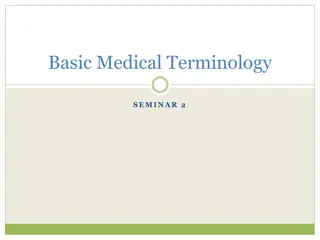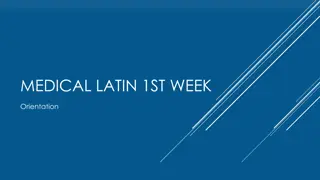Decoding Latin Terms in Research Writing
This workshop series explores the significance of Latin terms in research writing, covering topics like the history of Latin, its influence on English, and its relevance in modern contexts. Participants engage in quizzes, learn common abbreviations, and understand the cultural importance of Latin in academic and scientific communication."
Uploaded on Feb 15, 2025 | 0 Views
Download Presentation

Please find below an Image/Link to download the presentation.
The content on the website is provided AS IS for your information and personal use only. It may not be sold, licensed, or shared on other websites without obtaining consent from the author.If you encounter any issues during the download, it is possible that the publisher has removed the file from their server.
You are allowed to download the files provided on this website for personal or commercial use, subject to the condition that they are used lawfully. All files are the property of their respective owners.
The content on the website is provided AS IS for your information and personal use only. It may not be sold, licensed, or shared on other websites without obtaining consent from the author.
E N D
Presentation Transcript
Decoding Latin Terms in Research Writing Centre for Language Education, EAP Workshop Series 2020/11/12 1 Beatrice Clegg cleggbd@sustech.edu.cn
Workshop Plan 1. Quiz 2. Background 3. Abbreviations 4. Words 5. Practice 2
Quiz 1. Latin is a dead language, when did it die? 2. What percentage of English comes from Latin? 3. In what situations is Latin still used today? 3
Which of these words are Latin? appendix ultra A.M./P.M. video major campus quantum agenda vice versa memo 4
Which of these words are Latin? appendix ultra A.M./P.M. video major campus quantum agenda vice versa memo All of them! 5
Why So Much? 1400 - 1850: Common scientific and academic language in Europe - aureate diction Cultural respect More efficient - very inflected language 6
Does it Matter? Efficiency Professionalism? Understanding: it is just a tool for efficiency and clarity, it is not a 'next level' or for making you look clever 7
e.g. or i.e.? id est that is (=) exempli gratia for the sake of example I have studied the 3 core sciences, i.e. biology, chemistry, and physics You can study many kinds of science, e.g. biology, chemistry, and physics 9
viz. videlicet it is permitted to see The article was reviewed by the 3 supervisors, viz. Dr Wang, Dr Liu, and Dr Smith A stronger form of i.e., less commonly used. 10
etc. or et al.? et cetera and the rest et alii and the others The talk is available to the public as well as students, staff, etc. See Jones et al. Usually for 4 or more authors. Never write and etc. 11
N.B. nota bene note well N.B.: Researchers did not have access to the medical records to confirm the accuracy of self-reported data. The only comon Latin abbreviation we always capitalise. 12
cf. confer put together - compare Baker 1992, Li 2003; cf. on methodology Harris 2005. Usually used for contradictory evidence or views. 13
ibid. ibidem in the same place 1. Whittaker, 99-108. 2. Ibid. 3. Id., 95. In footnotes or citations when the source is the same as the previous citation. Id. can also be used. 14
In Academia What do these terms mean? BSc MSc PhD MPhil MD baccalaureus scientiae magister scientiae philosophiae doctor magister philosophiae medicinae doctor 15
Whole words 16
Using full Latin words Use italics unless style guide states otherwise For scientific names of plants and animals, put in parentheses after the common name The American black bear (Ursus Americanus), is not as aggressive as most people believe. 17
[sic] Thus acknowledges a mistake in the quoted source The college is well-known for it s [sic] high academic standards. Always in [] to show it is author s insertion, outside the quoted text. 18
Re In the matter of used at the top of letters and emails to draw out the key topic (usually in business) Re the shipping, we must act quickly. Not the same as RE:, which is used for email replies 19
per Through/by means of - according to, following, for each Per the instructions, we wore safety glasses The should be one handout per student 20
passim Scattered - appears multiple times throughout the quoted source See Grant, History of Astronomy, p.428 and passim 21
Matchy Matchy quoting something with a mistake in it c.f. citing a paper with more than 3 authors [sic] according to ibid. comparing sources with different viewpoints per referencing the same source twice in a row et. al. in footnotes 22
Find the Mistakes 1. The small, rocky planets (i.e. Mercury) are closest to our sun. 2. I have two PhD supervisors, e.g. Dr Brown and Prof. Zhou. 3. The students are busy with homework, quizzes, midterms and etc. 23
Find the Mistakes 1. These conclusions are reflected in the data, c.f. Hanson 2018. 2. Re. the timetable problems, yes I can rearrange. 3. I hope to complete my Phd soon. 4. The data [sic] was presented in a table 24
Pronunciation Vowels: short c, g: hard, like cat and gap v: soft, sounds like w Top tip: most native speakers have no idea 25



